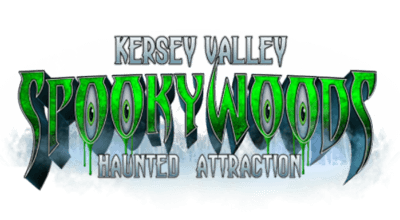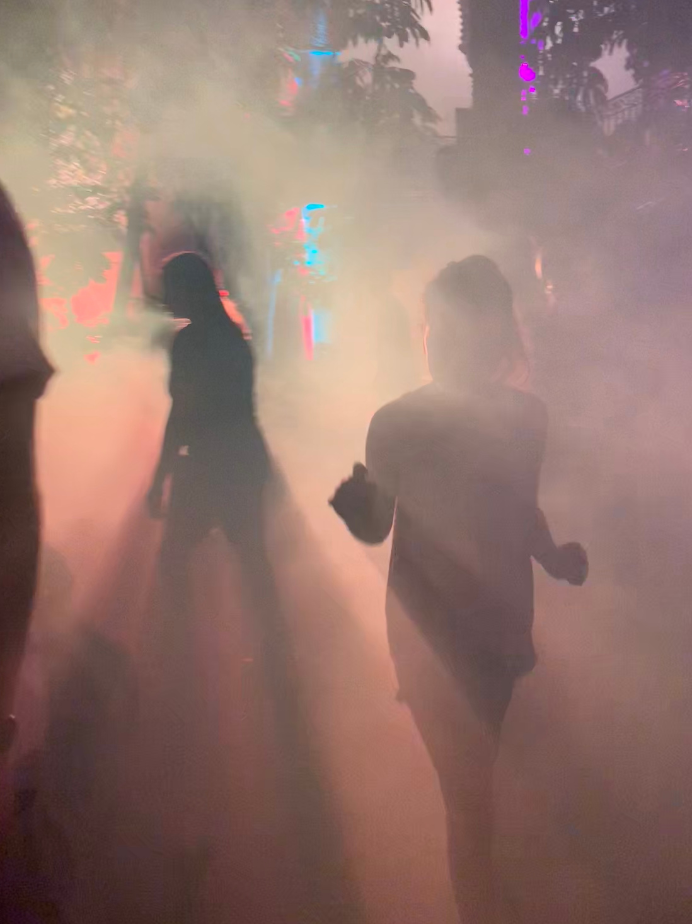BOO!
Do you enjoy manufactured scenes of terror, bone-chilling screams, and nonstop scares? If so, you’re not alone. Every year, thousands of people come to Kersey Valley Spooky Woods to immerse themselves in a world of frightening folklore and dozens of unique haunted attractions.
So, what’s the draw? What is the psychology of fear, and where does fear originate in the brain? The science that explains why some people love a good scare is strangely fascinating!
The Psychology Behind Fear: A Quick Introduction
Fear is a natural emotion that has existed since the beginning of time. It's the body's response to a perceived or imagined threat, like clowns, dolls, or darkness. And while it may seem like an instinctual reaction, fear is controlled by our brains. For example, when you hear a loud noise and jump out of your skin, it's not just because the sound startled you. It’s also because your brain interpreted that sound as a threat and sent signals to your body to react accordingly. Our bodies typically react to fear by launching into fight-or-flight mode. This process is set off by a biochemical surge of adrenaline, endorphins, and dopamine. These hormones and chemicals are also related to more pleasurable activities, like dancing or a runners high. So, it’s no surprise that people may be attracted to lots of scenarios — including haunted houses and scary movies — that generate similar thrills. But how do we know what we should be afraid of? And why do some people enjoy haunted houses and scary movies while others don't? Well, it’s scary how interesting the answers are!5 Psychological Facts About Fear
The fear of the unknown is a powerful emotion. It triggers that biochemical rush we described, which is why many people enjoy haunted houses, theme parks, and other downright scary attractions. But what drives people to seek out these types of eerie experiences? Here are some interesting facts about fear.1. Fear affects behavior more than any other emotion.
You might not realize how fear affects behavior, but it is a powerful motivator. Fear leads people to avoid things that make them feel afraid and seek out things that make them feel safe or comfortable. Fear can affect behavior in many different ways:-
- Increased heart rate and blood pressure
-
- Altered breathing patterns
-
- Slowed reaction times
2. You can learn fear through conditioning.
Can phobias be learned? Absolutely! You don't need an innate fear of snakes or spiders if you grow up in an environment where these things are dangerous. For example, your parents might tell you not to touch them. Or they might hurt you when you try to pick one up. This kind of learning happens early and triggers fear responses. Some fears, however, seem to be innate or even culturally learned. No one needs to tell you that darkness is scarier than daylight. And if you’re a 21st-century American, no one needs to explain to you that clowns can be creepy. Conditioned or not, it’s our most ingrained fears that we tend to seek out when we want a good scare — because these are the ones that offer the most intense response.Experience the psychology of fear in action at Kersey Valley Spooky Woods!
Book Now to Visit One of the Top 5 Haunted Attractions in America!
3. Fear is contagious.
Commentary on horror movies or haunted houses spreads like wildfire across social media — before they even hit theaters or TV screens. If you've seen someone react badly to a horror movie scene, or read their tweets about it, there’s a good chance you'll respond the same way! This phenomenon is called "social modeling." Simply put, it's when one person's behavior influences another person's behavior through observation or imitation (or both). Talk of scary situations can also trigger intrigue and fascination. Just think of how eager children are to hear a new ghost story around a campfire. Or how irresistible it is to click a headline about paranormal phenomenon.4. Fear both attracts and repels.
People experience fear in different ways. Some seek out haunted attractions because they enjoy the rush of adrenaline and overcoming their fears in a ghostly but safe environment. And studies show some people have a greater sensitivity to fear than others, making them more likely to enjoy haunted attractions than those who aren't as sensitive to getting spooked. NOTE: Another important thing to remember is that fear-provoking situations are often not enjoyable to survivors of trauma. What may be an exciting evening out for many people could be re- traumatizing for those who have been victims of abuse, crime, war, natural disasters, or other events. So, it’s good to be sensitive to those around you before suggesting a scary movie night or haunted trail.5. Fear inspires connection.
Experiencing fear with others makes us feel more social and closer to one another. It also helps build trust by allowing a group of people to go through something together that would otherwise be difficult to do alone. And, yes, haunted houses do make a great date night experience too! It’s no wonder fear compels millions of thrill seekers to visit haunted attractions yearly. According to the Haunted Attractions Association, more than 20 million brave Americans visited haunted attractions in 2016 alone — making this bizarre yet pretty cool industry worth more than $600 million annually in the United States!Experience the Psychology of Fear in Action at Spooky Woods
Are you brave enough to experience the thrills and frights waiting for you at Kersey Valley Spooky Woods? Then, gather your friends and family and head to the scariest attraction in North Carolina!We guarantee you’ll have a scary good time!
Start planning your visit now... if you dare. Bwahahaha!

